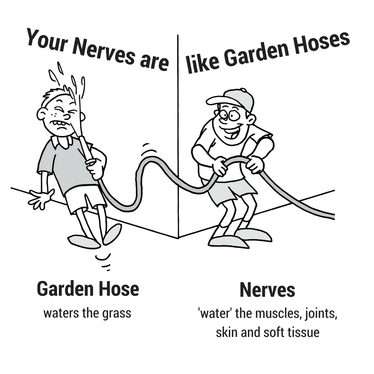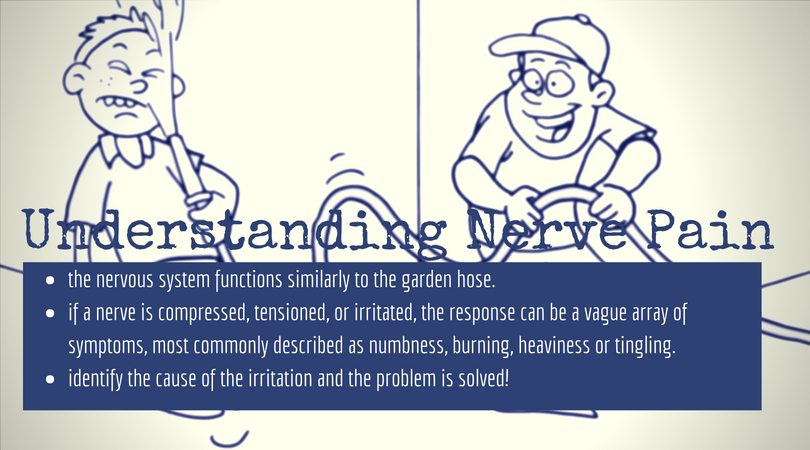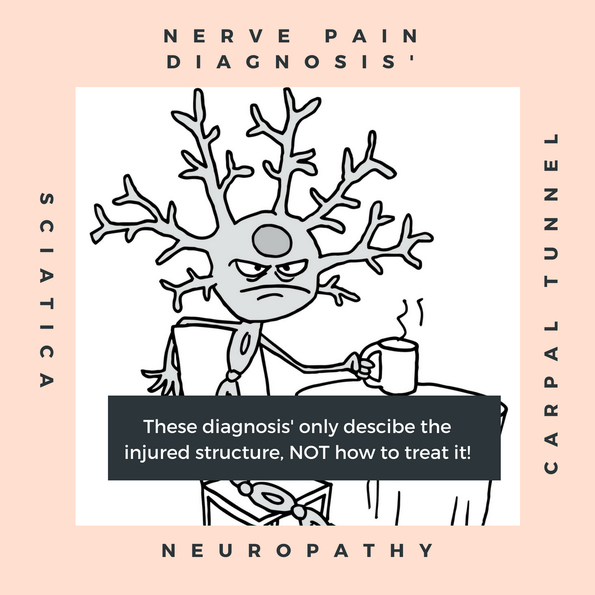Sciatica, carpal tunnel, neuropathy...these words all have scary connotations! Fortunately, the majority of nerve-related symptoms are not threatening. Each of these diagnosis' are a symptom describing the specific tissue that is irritated. They do not address the underlying issues that cause the pain, nor how to treat it.For example, if someone comes into Heafner Health with wrist pain, and I identify they have carpal tunnel syndrome, I know the median nerve is receiving extra stress. While the compression or tension may be at the wrist (where the person is experiencing pain), the issue could be ANYWHERE along the nerve- in the neck, the shoulder region, forearm, or the wrist. Since the nervous system is a continuous structure, providing education about the nervous system and treatment anywhere along the nerve can result in a successful outcome! For this reason, understanding how nerves move and work can make a huge impact if you are experiencing pain. Nerves are like Garden Hoses The nervous system functions similarly to a garden hose. Just as the garden hose delivers water, our nerves are responsible for feeding the muscles, joints, skin and other soft tissue. If the garden hose becomes kinked or compressed, the amount of water flowing through the hose is reduced. Your nerves respond in a similar fashion. If nerve pressure or irritation rises to a certain level, blood flow to the nerve and electricity through the nerve, known as the axoplasmic flow, is interrupted. This alters the amount of nutrition through the nerve and leads to an aggravated state. The nerve’s response to reduced nutrition can be a vague array of symptoms, most commonly described as numbness, burning, heaviness or tingling. To improve nerve nutrition, you must improve the flow of electricity and blood in the nerve. This is accomplished through gentle and specific movements and exercises. Fortunately, just as the garden hose returns to full function when the kink is released, nerves also respond favorably to the decreased compression and increased movement. -Jim Heafner PT, DPT, OCS Heafner Health Physical Therapy Boulder, Colorado
14 Comments
|
Heafner HealthPhysical Therapy Archives
April 2024
Categories |




 RSS Feed
RSS Feed
